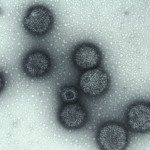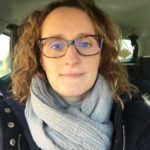Link to Pubmed [PMID] – 16700631
PLoS Med. 2006 Jul;3(7):e263
BACKGROUND: A chikungunya virus outbreak of unprecedented magnitude is currently ongoing in Indian Ocean territories. In Réunion Island, this alphavirus has already infected about one-third of the human population. The main clinical symptom of the disease is a painful and invalidating poly-arthralgia. Besides the arthralgic form, 123 patients with a confirmed chikungunya infection have developed severe clinical signs, i.e., neurological signs or fulminant hepatitis.
METHODS AND FINDINGS: We report the nearly complete genome sequence of six selected viral isolates (isolated from five sera and one cerebrospinal fluid), along with partial sequences of glycoprotein E1 from a total of 127 patients from Réunion, Seychelles, Mauritius, Madagascar, and Mayotte islands. Our results indicate that the outbreak was initiated by a strain related to East-African isolates, from which viral variants have evolved following a traceable microevolution history. Unique molecular features of the outbreak isolates were identified. Notably, in the region coding for the non-structural proteins, ten amino acid changes were found, four of which were located in alphavirus-conserved positions of nsP2 (which contains helicase, protease, and RNA triphosphatase activities) and of the polymerase nsP4. The sole isolate obtained from the cerebrospinal fluid showed unique changes in nsP1 (T301I), nsP2 (Y642N), and nsP3 (E460 deletion), not obtained from isolates from sera. In the structural proteins region, two noteworthy changes (A226V and D284E) were observed in the membrane fusion glycoprotein E1. Homology 3D modelling allowed mapping of these two changes to regions that are important for membrane fusion and virion assembly. Change E1-A226V was absent in the initial strains but was observed in >90% of subsequent viral sequences from Réunion, denoting evolutionary success possibly due to adaptation to the mosquito vector.
CONCLUSIONS: The unique molecular features of the analyzed Indian Ocean isolates of chikungunya virus demonstrate their high evolutionary potential and suggest possible clues for understanding the atypical magnitude and virulence of this outbreak.







